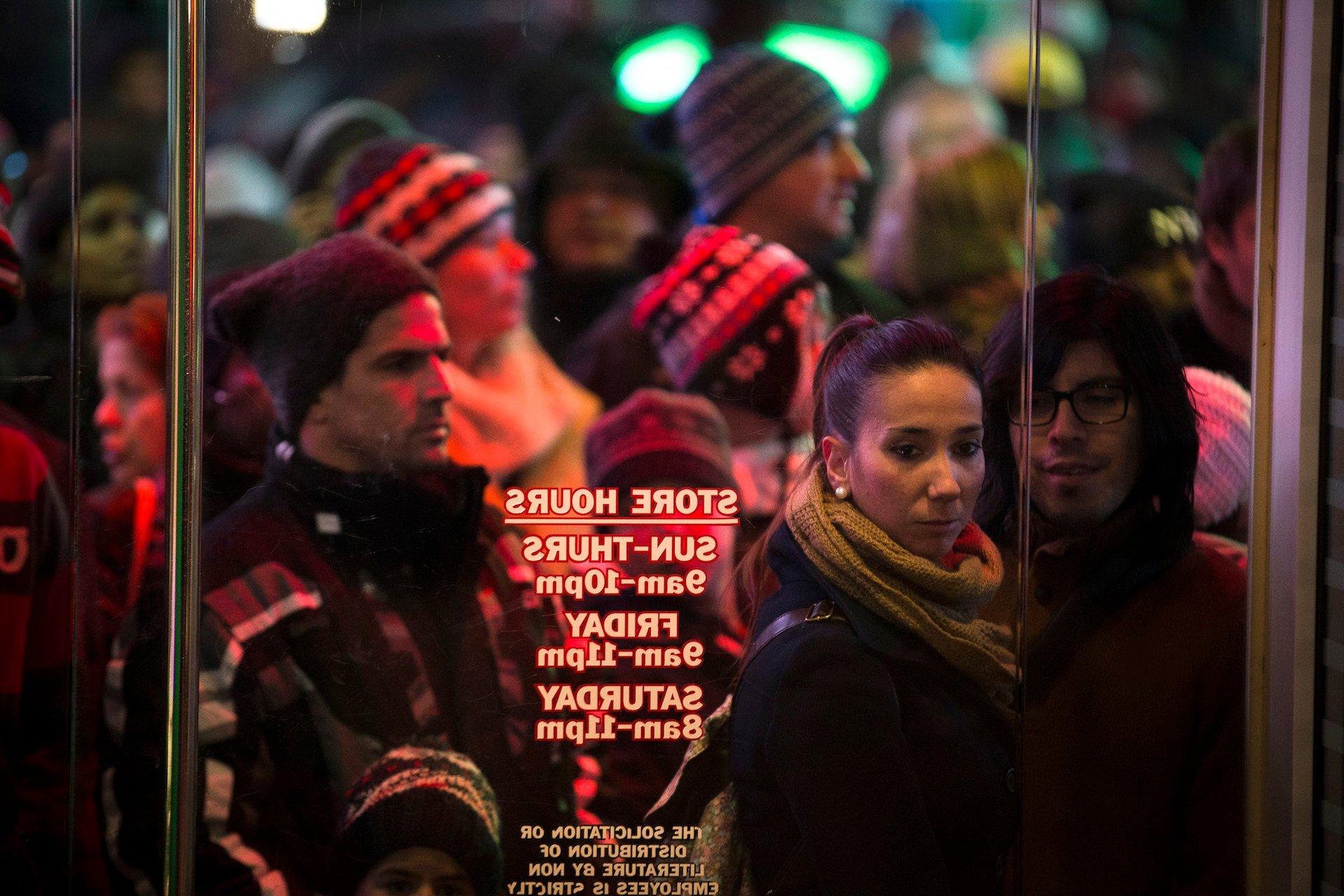Black Friday will be even more annoying this year
Black Friday diehards beware.


Black Friday diehards beware.
Shoppers thronging retailers the day after the US Thanksgiving holiday will likely face longer, slower lines as they try ring up the door-buster bargains that mark the traditional start of the US Christmas shopping season.
The reason? Those new chip cards Americans are now receiving by the millions, which can stretch out transaction times by a matter of seconds. Any individual might not notice. But given the fact that 134 million Americans shopped over the Thanksgiving break in 2014, those seconds could add up.
“If you’re adding five to 10 seconds for every single person, Black Friday is gonna be a very black day for some retailers,” says Mark Ranta, head of digital banking at Florida-based payment processing company ACI Worldwide.
The US is in the midst of the largest overhaul of its retail payments system in decades, as retailers, credit card companies, and consumers grapple with a wholesale changeover from the magnetic-stripe style credit cards to more-secure chip cards. While the move has been in the works for the US for years, the transition has gathered steam in recent months, driven by an October deadline that shifted the responsibility for any fraudulent transactions from financial institutions to retailers—if those retailers hadn’t upgraded their equipment in order to accept chip cards.
Chip cards, which have been used in Europe for about a decade, are considered safer than magnetic strip cards. But there are tradeoffs. For instance they take longer to transmit the information required to complete a sale. Magnetic strip credit card “swipes” take a couple seconds, and most analysts say that chip card “dips”—where you insert your card into a machine—take longer though estimates of exactly how long can vary.
Chip card transactions take at least 10 seconds more than a traditional swipe of a credit card, says Nick Holland, an independent payments consultant has analyzed the chip card migration and its effect on consumers. Even slight customer confusion over how or whether to “swipe” or “dip” new cards and unfamiliarity with software that processes payments can tack on a few more seconds, he says.
“If consumers aren’t educated, and the cashier doesn’t help, it wouldn’t be surprising if it took 30 seconds,” per transaction, said Holland.
To be sure, using a chip card isn’t brain surgery.
But the magnetic card has become second-nature to Americans over the past few decades and changing that behavior will take some time, says Holland.
Adding to the fumble at the cash register is the fact that not every retailer has upgraded its payment equipment, which leads to a bit of confusion about whether to swipe or dip. (The new chip cards, known as “EMV” in the payments industry, can do both.) While large merchants are upgrading, many mid-size merchants haven’t yet upgraded, says Deborah Baxley of Capgemini Financial Services.
Retailers stress that they are prepared to keep lines moving as the US holiday shopping season switches into high gear.
“Our store employees have gone through training over the last few months for the EMV process and we anticipate they can help customers through the checkout process,” Jeff Shelman, a spokesperson for Best Buy told Quartz.
Jason Brewer, a spokesman for the Retail Industry Leaders Association, said the group doesn’t expect major problems over Black Friday. Brewer noted that not all Americans have chip cards yet. Survey results published by payment terminal maker Ingenico in October reported that 40% of US cardholders still hadn’t received a chip card.
On the bright side, if there are any problems, they likely won’t be a perennial part of the Christmas shopping season in the US.
“There’s no question that the chip card will have a negative effect on checkout times for this year,” says Jim Van Dyke, CEO of financial research firm Javelin Research. “But it’s only an issue for this holiday season. I have no doubt in my mind we’ll have it fixed by the next holiday season.”